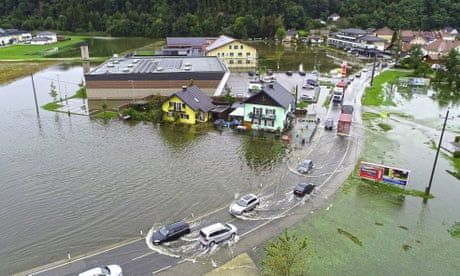
The Austrian capital has been spared the worst of recent flooding. Its experience could be a lesson in how to tackle the climate crisis
Floods are seemingly unavoidable these days. Florida, North Carolina, Nigeria, Tunisia, Mexico, India, Nepal, Vietnam, Poland and Austria are among the places that have experienced flooding in the last month. Those floods should no longer come as much of a surprise. Climate change leads to more frequent and intense rain almost everywhere on the planet, and most infrastructure, from roads and bridges to canals and hydroelectric dams, is simply not built to withstand such extremes.
That’s where Vienna stands out. The floods that have deluged central Europe over the past two weeks caused plenty of disruptions in Lower Austria, including to a newly built train station meant to connect the burgeoning suburbs to the city. But aside from some disruption to Vienna’s otherwise well-functioning subway system, Viennese homes were largely spared. Why? It’s not because Vienna sits on higher ground than the surrounding areas (by and large it does not). The reason the city escaped the worst of the floods is because of human engineering and political foresight dating back to the 1960s, which emerged in response to earlier floods that devastated parts of the city.
Gernot Wagner is a climate economist at Columbia Business School. He is a member of the scientific advisory board of the Wiener Klimarat, Vienna’s climate council
Continue reading...